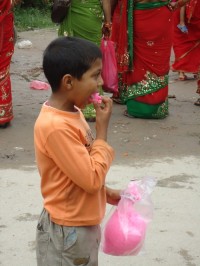Mithila Art, an art without artists
Nepal’s most famous and fascinating indigenous art forms, by far, are the Mithila paintings. Also known as Madhubani paintings, this form of art is a foundation of the women of the Mithila region of Nepal. Between the rivers Narayani and Koshi lies this ornate Mithila region, shaded by old mango groves and watered by melt river waters of Nepal and the Himalayas.
Like the Hindu religion (which these people follow) that has no date of existence, the Mithila art has existed for ages, perhaps from the time of King Janak. The land of Janakpur is the center of Mithila art. Home to Sita or Janaki (the daughter of King Janak), the wife of the Hindu god Ram Chandra, Janakpur is a famous Hindu pilgrimage site for its magnificent art and culture.
Mithila Art is traditionally painted on walls during various festivals and religious ceremonies such as Diwali, Chhat and during weddings. When monsoon comes, these paintings are washed away by the rains and have to be repainted. Women mainly paint pictures on the walls to decorate their houses. However, these paintings on wall have deeper themes for sometimes; they are the stories being told in a series of panels.
Today, the Mithila Art is not limited to the walls of the houses. Instead, it is creeping into paintings and products like mirrors, ceramic pots and hand-embroidered cushion covers. In recent times, the art has also flooded handicrafts shops in Kathmandu.

Done in primary colors of natural origin on paper and cloth, the Mithila Art narrates mythological and religious events. Green beans, different flowers, vermillion powder and soot from oil lamps are mixed in cow milk or dung to create colors that are applied with bare fingers or with a piece of bamboo wrapped with cotton. Widely used Mithila images include deities such as Vishnu, Ganesh, Radha, Krishna, Sita and Ram. Apart from religious subjects, daily life activities carried out by the women, for instance, fetching water, combing hair and taking vegetables to the market are also portrayed in these colorful paintings. Besides the above mentioned, creatures that are painted also include tigers, cows, crows and turtles.
For over three thousand years, Mithila women Maithili women have painted the mud walls of their homes with scenes of legends of Hindu gods and goddesses, passing the skill from mother to daughter. Maybe, that is what keeps the intricate paintings alive even today.






